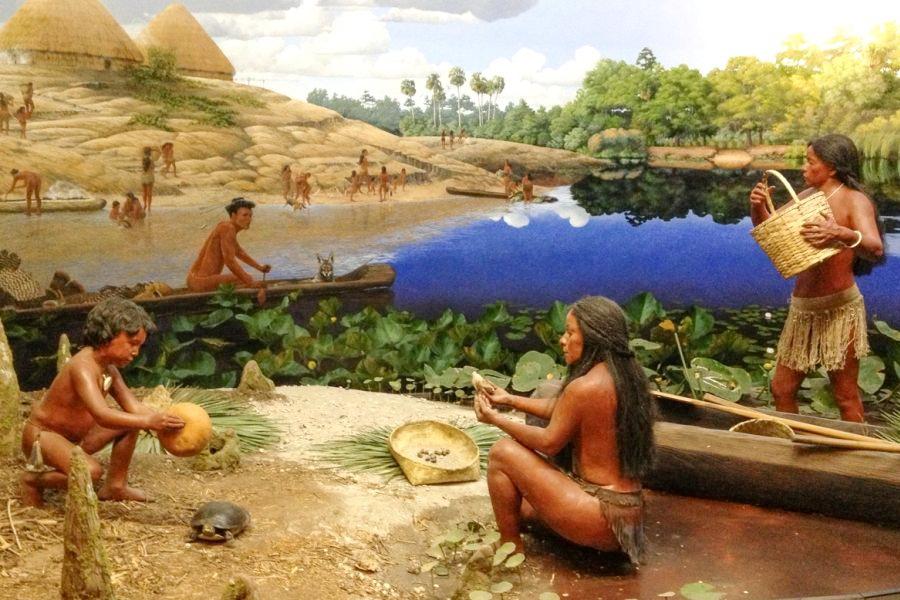
Native American Peoples: Archic Indians (8,000-1,500 BC)

Figure 1.-- This is a diorama of human settlements depicts a scene at the beginningb of the Archaic stage (about 10,000 BC). The Archic Native Americans in Florida are show as they increasingly begin to exploit local resources. The clothing, especially for children and men, is hypotetical and more probably they didn't wear any. Interestingly, the Caribbean was primarily peopled by Natives Americabs from northeaster South america rather than Florida, with the exceotion of Western Cuba. Source: Florida's Museum of History.
|
|
The Archaic period in Native American culture is much shorter than the the Paleo or Proto-Indian era, although this is debated depending on just when the Bearing Sea crossing is dated. ThevArchic stage can roughly be dated with the disappearance of the Clovis people (roughly 9,000 years ago. We know, howver, much more about them because of the greater number of archeological sites . The Proto-Indians lived in a still rather cold environment with the Ice Age even as the glacial/ice sheet coverage began to recede. Archic Indians experienced with the end if the Ice Age a changing environment featuring a warmer, but more more arid climate. Theu also had to adapt to the disappearance of the last megafauna. ['Blame ...'] This required a major cultural adaptain. With the rise of sea levels rose, river deltas became flooded proding new resources to exploit. With the warmer, grier climate, vegetation changed which led to more change. As the Pro-Indians adaoted to these changes they became what is not described as Archic-Indians. Archeologists estimate the time frame from about 8,00-1,500 BC. Most Native American people at this time continued to be mobile hunter-gatherers, but individual groups began to work with resources available locally rather gthan followung migratory heards.
Over time destinct regional patterns (Southwest, Arctic, Poverty, Dalton and Plano traditions) developed.
And such regional cultural adaptations became standard. Hunter and gathering did not disappear, butb mixed economic activity appeared, utilizing small game, fish, seasonally wild vegetables and a range of plant foods. [Fiedel] This varied greatly from group to groupand regionally as did the local resources to exploit.
Many groups continued to primarily exist on big game hunting, but hunting traditions evolved. Hunting became more varied and hunting more sophisticated. [Pielou] And there is evidence of increasingly sophisticated cultural organization. Archeologists have found some artifacts and materials in burial sites suggesting definite social differentiation based upon status. [Imbries] And by the end if the Archic stage the cultural advances had akready begun in the major centers of advanced cultural development, socially Meso-America abd the Andes. It is from Archic Indians that the modern tribes evolved that the Europeans encountered beginning with Columbus' voyage (1492).
Sources
HBC

Navigate the Historic Boys' Clothing Web Site:
[Return to the Main Native American page]
[Introduction]
[Activities]
[Biographies]
[Chronology]
[Clothing styles]
[Countries]
[Bibliographies]
[Contributions]
[Essays]
[FAQs]
[Glossaries]
[Images]
[Links]
[Registration]
[Tools]
[Boys' Clothing Home]
Created: 11:58 PM 7/28/2013
Last updated: 11:58 PM 7/28/2013



